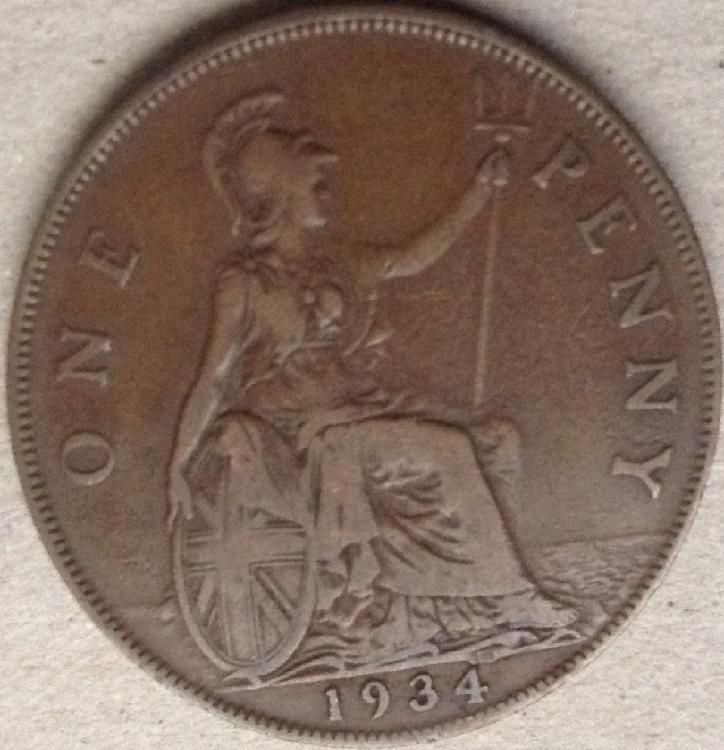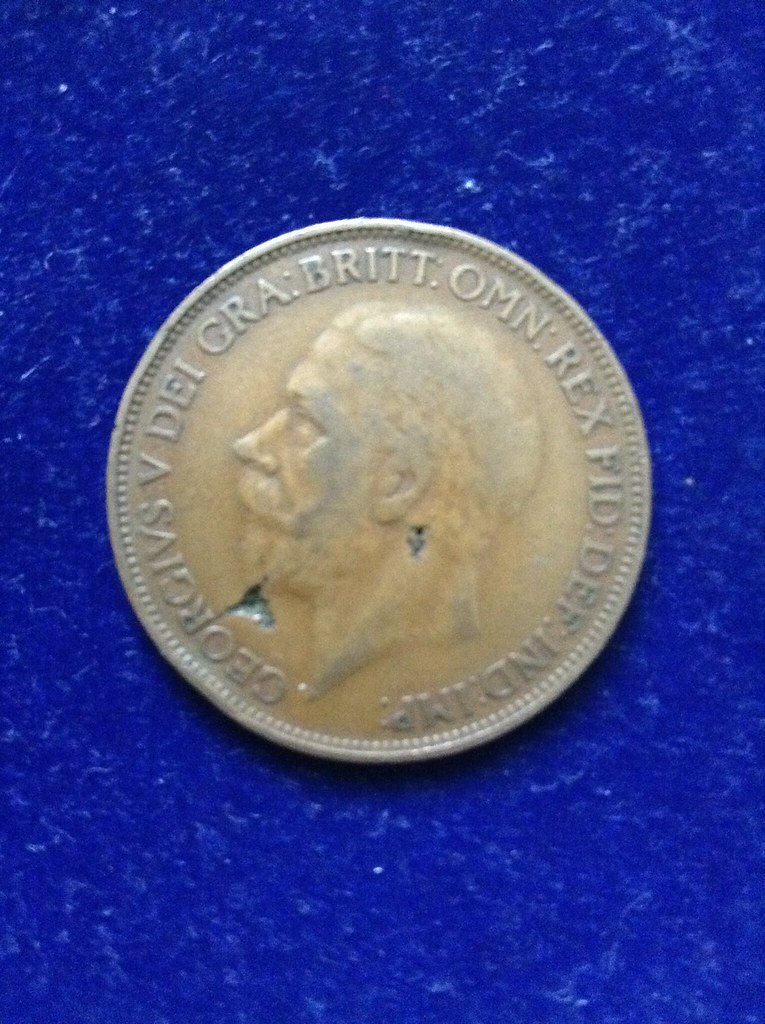|
|
The current range of books. Click the image above to see them on Amazon (printed and Kindle format). More info on coinpublications.com |
|
|


Liam
-
Content Count
23 -
Joined
-
Last visited
Posts posted by Liam
-
-
Hi Richard
Yes of course, I'll PM you some pics tomorrow. Great site by the way!
Would the missing waves be caused by die fill?
-
Hi all,
Was having a browse through the rarest pennies site and came across the 1934 missing waves: https://rarestpennies.wordpress.com/1934-missing-waves/
Would you say this is one?
-
 1
1
-
-
Thanks for the replies! I did imagine imagine it would just be a normal one but having never seen a proof in hand I thought I best make sure!
-
Hi all,
Sorry if this has been discussed before but I'm just wondering, how can you tell the difference between a normal and proof 1853 halfpenny? Looking at images online hasn't made it any clearer (maybe my computer screen/ glasses just need a wipe!). I've attached an image of my example (still not quite got this photography lark) if somebody could tell me whether it's a normal one or not please!
-
The rim looks thicker than it should be so I'd say its a fake. The edge lettering is sometimes an easy way to spot fake £1 coins too if you could upload an image of that.
-
Thanks Rob, an informative reply as always!
-
I'm just wondering if I can get peoples opinions of whether these letters are struck over another. The first one is the letter A at the beginning of the legend on the obverse of a 1791 Leeds D&H 52 token. The second one is the letter S of the word 'walls' on the reverse of a 1795 Middlesex D&H 985. I'm unsure if they are letters over other letters, recut letters, or just simply flaws in the die. To me, the S looks as though it is over another S.
Cheers
Liam
-
Last post is wrong sorry, it is the link near the top of the page that says 'New- Download book in PDF format' where it can be downloaded from in full, the one lower down the page does not work

-
For anyone that doesn't have a copy of Dalton and Hamers token coinage book it can be viewed online here:
http://provincialtokencoinage.weebly.com/
If you scroll past the image to the download link it can also be downloaded as a PDF

-
With the Hull one I was just thinking maybe it would have been an easy way to differentiate between the reverses if this flaw is only associated with the D&H 20. I was just surprised to see no mention of it considering D&H use die flaws as a way to identify other token types.
Paulus, that is a very nice example by the way!
-
Here are some of my latest token buys. They're only low grades but they were cheap and I like them!
A couple of things I've noticed with these:
On the Hull Halfpenny, the horizontal line in the H of Hull continues through to the letter U, does anyone know why this is? I've noticed it is in Dalton and Hamers image of this reverse (this token is a DH20 I believe), yet they make no reference to it which I find odd as it stands out quite a bit!
On the Manchester Halfpenny, it seems that the bottom of all three letter E's on the obverse is broken. Again, does anybody know why?
-
 1
1
-
-
There must be other 1845 Farthings out there with this same fault surely? I wonder if anyone has any? Come on people get checking!
I've been checking an image of my 1845 (can't seem to take a clear, zoomed in photo with my iPad!) against Robs 1844 and the only difference I can spot is the one serif B. Can anyone else see anything (despite the fuzzy image)?
That's an interesting coin Michael. I'm just wondering, at what point does a filled die such as these become a variety? Is it when found across multiple examples?
-
I'll have to overlay the images as you say then Rob. Unfortunately won't be able to do it until later in the week. I've tried to upload some (hopefully) clearer images but apparently I'm only allowed to upload 500 or so kb?
The one serif B is listed as a variety for 1845 on the all about Farthings site so maybe it could be a later strike from this die? I've had a look at the image on the all about Farthings site of an 1844 with the same one dot, but it looks as if the B has no serifs.
-
What would you say is best to look for when comparing the reverses?
All letters that point to a tooth or gap on my 1845 seem to be the same on your 1844, and I cant see any glaringly obvious differences elsewhere. Maybe there are differences staring me in the face and I just cant see them!
-
Cheers for the replies!
Rob, do you know what actually caused there to be only one dot on the 1844?
-
-
-
I was hoping it would be something more interesting than that, ah well!
Cheers for the reply
-
Hi!
I don't post here much (always reading the forum though!), but would like one of you knowledgeable folk to help if you can! I am just wondering what could have possibly caused my 1940 farthing to appear as it does? It is very dark in colour (with some red) and has a rough feel to it. The reverse appears to be slightly concave, and there is also a raised dot before the date. I imagine it must have been done during the minting process, so I'm just wondering if anybody knows how? The pics should hopefully show below, I've pictured it next to a regular farthing for comparison. Cheers!


-
I may have to give the book a purchase, cheers! Azda, I did think it looked as though it had been polished unfortunately, but I thought £40 for those two crowns alone was worth it. Most of the other stuff I managed to get with these are in poor condition, below are some of the better ones. There was also an 1822 Hibernian penny (I think) with R.F stamped on it, does anybody know what this means?
1853 halfpenny:


1855 penny:


1841 penny:


Hibernian penny:

cheers!
Liam
-
-
Hi, I'm fairly new to collecting and found this forum so thought I'd say hi. Was hoping to post photos of my most recent additions however I'm on an iPad so unsure how to post them on here. Any help guys and sorry if this is explained somewhere else! Cheers!
 Coinpublications.com
Coinpublications.com















More Pennies
in British Coin Related Discussions & Enquiries
Posted
In terms of rarity, is it a case of the 1934 missing waves appearing to be rarer than other dates (hence the inclusion on Richards site), or are all of these missing waves pennies from all dates thought to be rare?